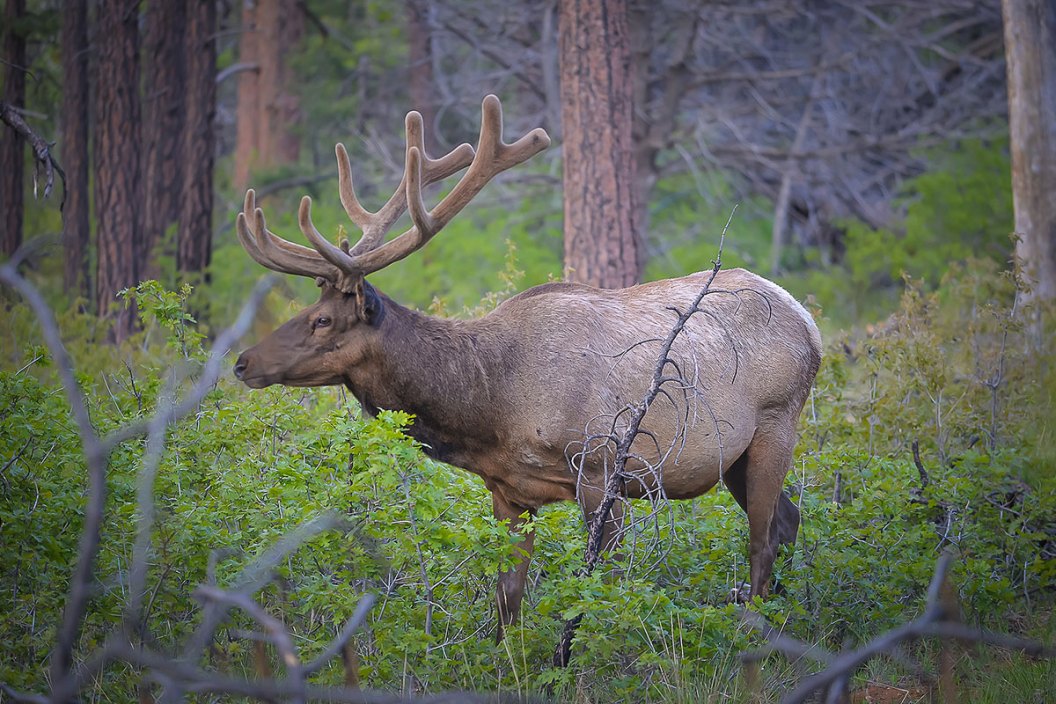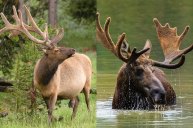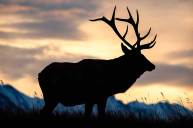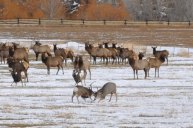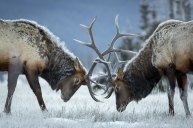Washington may not be the first state that comes to mind for epic elk hunting. However, there are some exceptional hunting opportunities, including a shot at Roosevelt elk.
Thirteen years ago, I cut my teeth hunting elk in northeastern Utah. I didn't know it then, but I'd eventually view it as an activity I needed each and every fall, so when I returned back home in Washington, I sought out more opportunities to go elk hunting with my bow.
However, after observing elk behavior in Utah's open terrain, I realized Washington's west side was going to be a drastically different situation. Thick forests, mountainous regions with ever-changing elevation, and even the climate difference changed things up enough that it almost felt like I was starting over.
Read on for some of the lessons I learned as a new Washington elk hunter. Ideally, it will help you on your own Washington elk hunting adventure.
The Dynamics of Washington Elk Hunting
Washington boasts incredible craggy subalpine parks, thick temperate rainforests, seas of big sagebrush, and rolling hills sparsely dotted with mixed conifers and hardwoods. You will find elk in all these habitat types in Washington state.
There are a number of special draws for elk hunting season and entire Game Management Units that are dedicated to draw-only hunts. Some areas are highly coveted and can take 10-12 years or more to draw.
Special draws for quality hunts are not the only opportunities, either! One of the coolest things about Washington is that they offer over-the-counter tags for residents and non-residents alike. They are available for archery season, muzzleloader, and modern firearm general seasons.
For over-the-counter tags, you simply order online or walk into the local dealer and purchase your license/tags. It's that easy. If you are out-of-state, you can go to the Washington Department of Fish and Wildlife (WDFW) website and order them online.
Roosevelt Elk, Rocky Mountain Elk, or Cascade Roosevelt Elk?
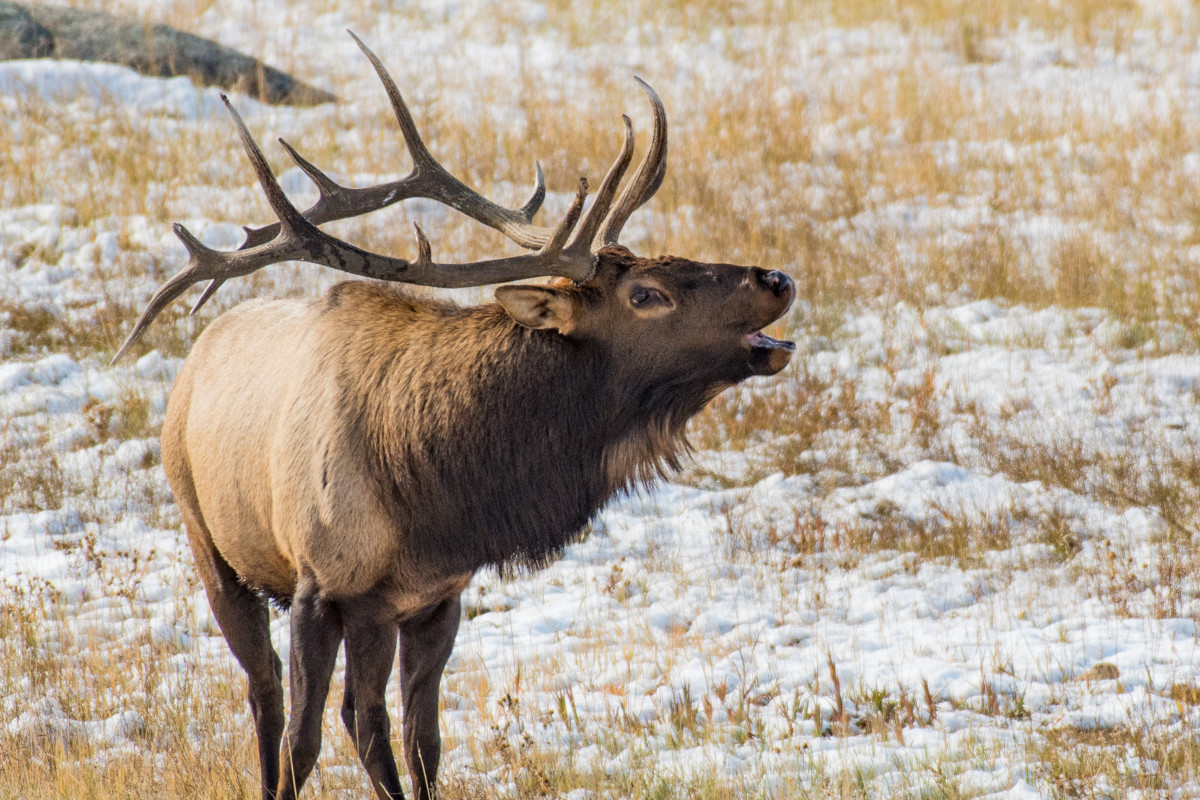
When you hunt Washington you are in the land of "Roosies." Roosevelt elk are big-bodied ungulates with deep reddish-brown to chocolate-drenched antlers. The deep coloration of the Roosevelt elk's antlers comes from mostly rubbing on red alders that are found all throughout Washington's westside forests. They are an awesome subspecies, and high on the list of desired harvests for a lot of big-game hunters.
Washington also has Rocky Mountain elk. The state's current Rocky Mountain elk herds hail from Yellowstone ancestors that were introduced in the early 1900s. The east side supports these elk, which are the ones most people are familiar with.
The biggest physical difference between the two subspecies is the Roosevelt elk's beefier bodies and smaller (but usually darker-colored) headgear.
This isn't to discount the Roosie bull elk rack. Roosevelt elk antlers may be smaller overall, but often have amazing character displaying curious palmations, extra points, drop tines, and other extra coolness.
There is a third variety of elk in the state, and that is a Roosevelt/Rocky Mountain hybrid. Washingtonians refer to these, colloquially, as the Cascade Roosevelt. Boone and Crockett and the WDFW both specify that true Roosevelt elk are only those that exist from the Washington coast to Interstate 5.
The Cascade Roosevelt elk reside in the area between Interstate 5 and the western slopes of the Cascades.
Choose a Side
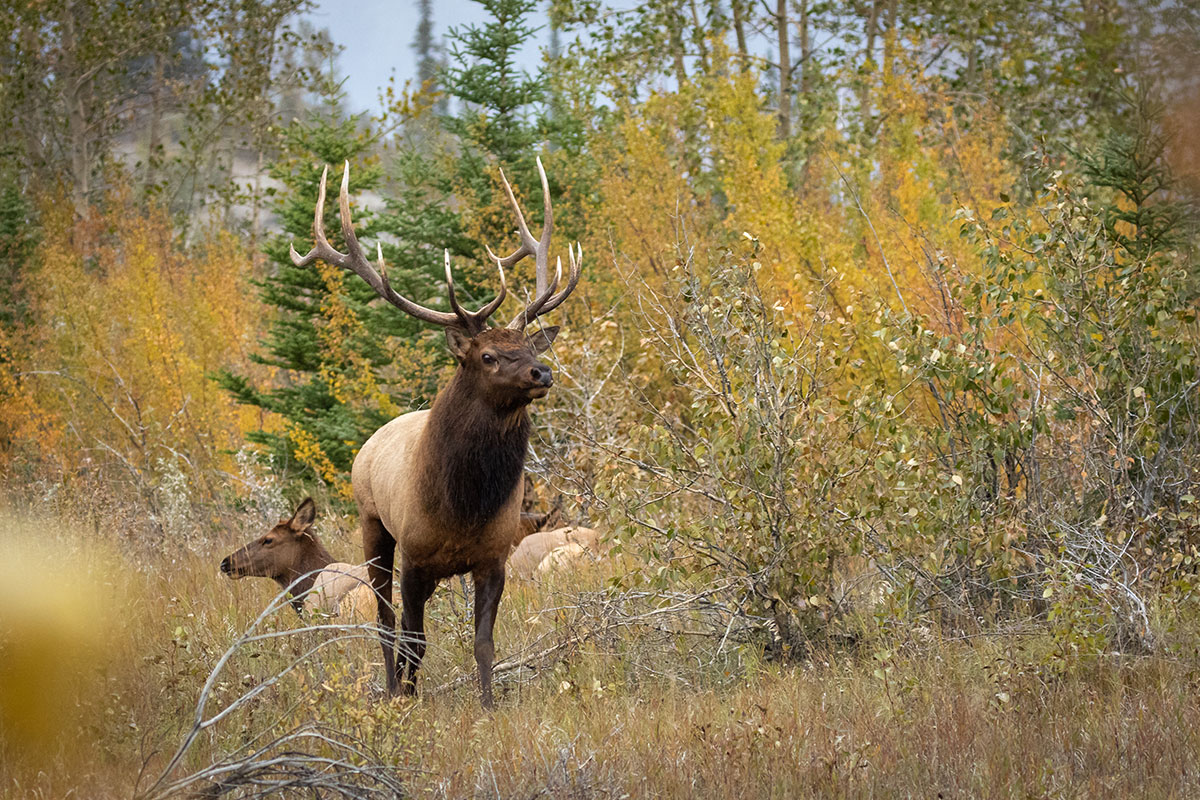
You will have to choose which side of the state you want to hunt, the east or west, and select your tag accordingly. Will you hunt the thick jungle of the, westside or the more sparsely vegetated east side? Both western Washington and eastern Washington offer their own unique terrain and challenges.
Most of the eastern Washington units will have you hunting spike, true spike, and antlerless elk only. There are some units that are "any elk." However, if you want a big branched Rocky Mountain bull elk from the east side, you will be applying and waiting for special permits.
Washington's west side can be dense, swampy, and wet, but it is here that you will be able to hunt 3-point or better Roosevelt bulls with an OTC tag. In some western units, you can also hunt antlerless or bull elk.
Cow Elk or Bull Elk?
Unless it is a special draw, you don't have to directly choose between antlerless or bull elk in advance. But depending on the elk areas you hunt, you will be choosing by default. Some GMUs and special draws are antlerless hunts while others are strictly quality bull elk hunts.
Each GMU has its own set of specific criteria to follow. So, reading and understanding the rules of the GMU you want to hunt is critical. That's something I had to figure out on my own, and I wish someone would have filled me in.
Choose Your Weapon
Yes, there are even more choices to make! Unlike some other states and hunting opportunities, you will need to specify which weapon you intend to hunt with. That weapon choice corresponds to the hunting seasons mentioned above. Choose between archery, muzzleloader, and modern firearm.
Choosing archery means you can only hunt with traditional or compound bows and archery tackle. Crossbows are only allowed during modern firearm season.
During muzzleloader season you can hunt with muzzleloader and archery equipment. By the time modern firearm seasons come around, your choices then include a centerfire rifle, pistol, shotgun with slugs, muzzleloader, archery, or crossbow.
The different seasons and weapon choices are offered at different points in the year to help with hunter overcrowding.
Washington Elk Hunting Tactics
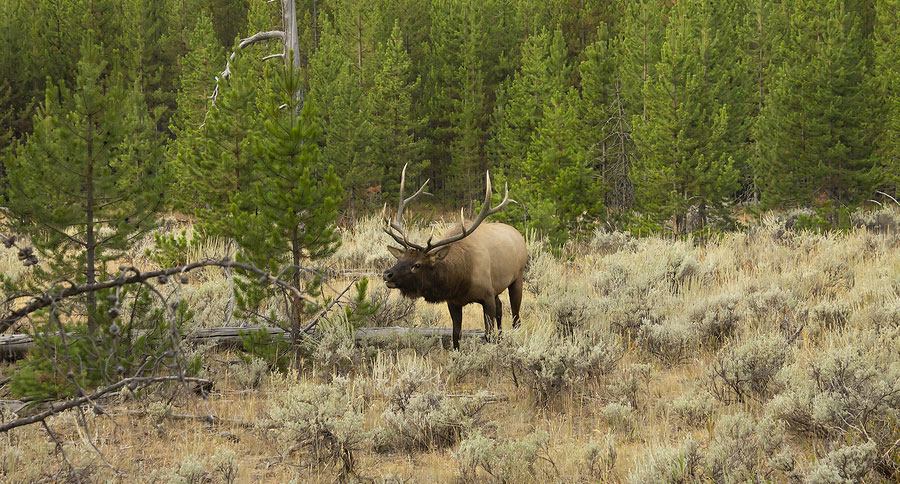
Spot and stalk is a popular method for Washington state elk hunting. This is especially true in the more open terrain of eastern Washington. Sitting at a high vantage point with a spotting scope or binos is beneficial in locating elk.
Still hunting, another popular method, is moving at an extremely slow pace while stopping to look and listen. Periodic glassing is often helpful with this method, even if you are hunting the dense western Washington forests. A subtle piece of antler or patch of rump can become much more obvious through thick vegetation with binoculars.
"Running and gunning" has become one of the top tactics of Washington elk hunters. Here, you are constantly moving through an area, but stopping regularly for 20- to 30-minute "cold call" setups.
The running and gunning hunter executes a call sequence, mimicking some combination of herd, calf, bull, or cow vocalizations. If there's no response that inspires taking action, the hunter moves to a new location and repeats the call sequence.
With these three methods, hunting downwind of your target quarry and consistently checking with a wind indicator powder is vital. When I say consistently, I mean puffing that thing every few minutes while making a stalk or moving towards anticipated elk locations.
You'd be amazed how quickly a 900-pound animal can wind you, whip around on a dime, and blaze off in the opposite direction. And they will smell you if you don't play the wind. I've learned that lesson the hard way.
Check the wind and correct your course as needed. Local thermals along with other factors will influence wind direction. When the wind becomes unpredictable or starts to swirl, back out and return when it has settled. Don't ruin your chance with elk that are close.
Treestand hunting for elk has been gaining popularity for a number of years now. It may not be the first choice for perpetually wandering elk hunters who can't sit still, but it is impossible to deny its effectiveness.
A treestand helps avoid the problems of hunting from the ground, namely scent and visual concealment. It can be a huge asset in thick western Washington forests, where visibility is poor and shot ops are often reduced to 15 yards or less.
Although not foolproof, a stand that is set high enough can keep you hunting when the wind is not optimal. A bull that you've cow-called from the ground and is reluctant to come in may do so when you get 25 feet above it.
Of course, you must still be prepared to back out if downdrafts are pulling your scent down to the ground.
Calling, if done right, works with all these tactics. If you are bugling, don't do it just to bugle. Know why bugling is the right call for that situation. Like Will Primos says, "Speak the language!" Don't be afraid to mix it up and try new combinations. As elk get smarter, we have to keep 'em guessing.
The Biggest Lesson: Washington Elk Hunting Requires Adaptability
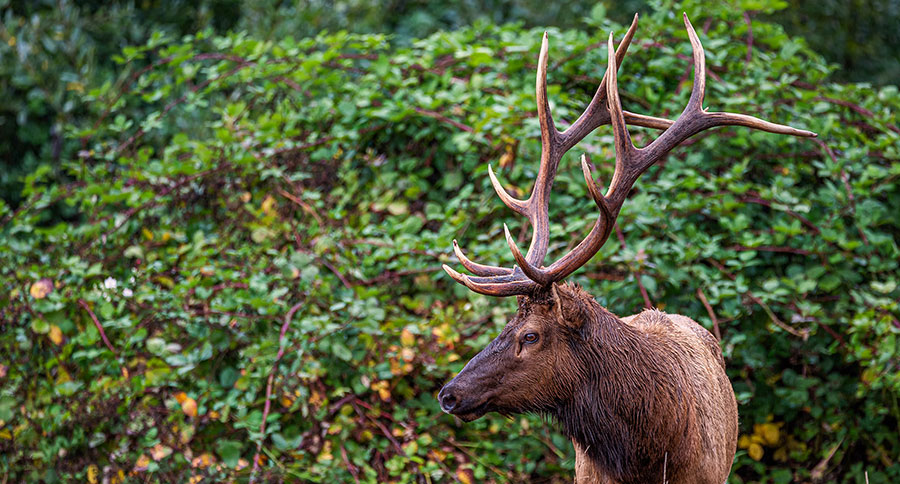
The real trick to hunting elk in this state is to be adaptable. Many times it takes using a mix of the above tactics, not just one or the other. Being able to think quickly and adapt as the situation is unfolding can ensure success.
Adaptability also extends to where you'll find the elk, which can often mean dealing with hunting pressure. Evaluate your goals. You don't always have to be the remote hunter silhouetted against a painted alpenglow with a bow in hand.
Elk hunting on the suburban/rural fringe may not fit the idea of textbook backcountry elk hunting, but it can be the most successful. There are good elk populations in these areas and the elk are sometimes more tolerant of people. It may give you the edge you need.
As unprecedented development in Washington continues and access becomes more difficult, front country elk hunting can be a serious boon.
Here's one last lesson: gates are a Washington elk hunter's friend. More timber companies and state land managers are locking their gates and restricting access due to garbage dumping, poor outdoor ethics, poaching, and a host of other illicit activities.
Some sections are locked off seasonally to prevent wildlife from being harassed during migration periods. In any case, gates are a good thing because it helps improve the quality of the hunt.
Sure, you may not be able to drive in and take your truck through miles of logging roads. Alternatively, you won't have to hike in as far to actually get into elk.
You're less likely to encounter hunt elk that are being pushed all over the landscape by hundreds of hunters or vehicles either. Getting that meat out on a hot September day during the rut will be quicker and less likely to spoil.
Look into areas that are restricted for non-hunters, but that you can gain access to when your season begins.
Hunting elk in Washington offers variety and diversity on both public land and private property. Hopefully, some of these insights will give you a leg up on punching your elk tag when you make your way to the Pacific Northwest for an elk hunt.
NEXT: 4 STATES YOU'D BE SURPRISED HAVE GOOD DEER HUNTING
